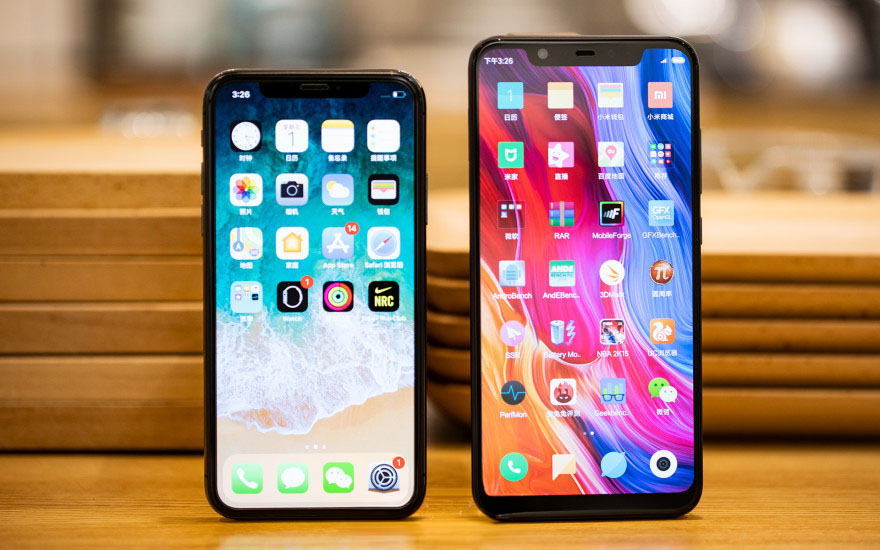Now, in 2025, using a Xiaomi Mi 8 poses a significant question: can a 2018 flagship still be capable of providing a meaningful experience in today’s advanced HyperOS ecosystem? Whereas newer devices, such as the Xiaomi 14 or POCO F6 Pro, offer much more modern hardware, the Mi 8 still appeals to users who appreciate the principles of sustainability and long-term value. This article investigates the practical usability of the Mi 8, its software potential, and performance over time. For more technical analyses, you might want to check our coverage on HyperOS features, custom ROM support, or bootloader policies.
Mi 8 Hardware Strengths in 2025
The Snapdragon 845 inside the Xiaomi Mi 8 is a chip that even by entry and mid-range standards in 2025 still holds up pretty well in terms of single-core responsiveness. With efficiency gains aside, the SD845 still keeps web browsing, daily multitasking, and interface rendering remarkably smooth.
GPU Performance and Gaming Capability
Before looking at specific game performance, it is worth noting some of the structural advantages of the GPU. The Adreno 630 still outclasses most 2024–2025 entry-level processors, so for more casual or broadly compatible titles like PUBG Mobile or Call of Duty Mobile, the Mi 8 supports medium to high settings with smooth frame pacing. This makes it a very compelling option for those who want an affordable gaming device without sacrificing too much in terms of user experience.
Showcase Experience and Longevity
Still, the 6.21-inch AMOLED panel of the Mi 8 provides rich contrast and deep blacks, hence it is still better than the usual LCD panels used on budget 2025 smartphones. However, in respect to users who have gotten used to the 120Hz display of new Xiaomi and POCO models, the 60Hz refresh rate may appear limited.
Long-Term Durability Considerations
After seven years of usage, the likelihood of OLED degradation increases, especially on second-hand units. Minor burn-in or slight peak brightness reduction will be apparent on devices that were mostly used with static UI elements. Despite this possibility, well-preserved units still provide great visual quality for media consumption.
Software Status and Upgrade Paths
The Mi 8 does officially top out at MIUI 12.5 based on Android 10, which no longer meets 2025 security standards. Still, the device enjoys arguably one of the most robust custom ROM ecosystems of any older Xiaomi model.
Community Support and Modern Android Versions
Due to its openness towards open-source, the Mi 8 runs Android 14 and even early builds of Android 15, thanks to LineageOS and similar projects. This extends usability by a mile, enhances security, and improves performance by removing all the legacy MIUI processes. Custom ROM installation becomes crucial for users who rely on modern applications.
Security, Integrity, and Banking Apps
Banking applications and Google Wallet require passing Google’s Play Integrity checks. These require users to employ modules like Integrity Fix or fingerprint spoofing to maintain compatibility with a custom ROM. This works reliably if set up and kept up to date correctly but demands technical knowledge and regular updating for uninterrupted operation.
Camera Performance with Modern Apps
In 2025, the Mi 8’s camera hardware might seem outdated, but thanks to computational photography tools, such as GCam ports, it greatly enhances output quality. Image clarity and HDR performance are still competitive with many modern mid-range offerings, as is night photography. Video recording up to 4K 60FPS also still outclasses many affordable smartphones that top out at 1080p.
Thus, using a Xiaomi Mi 8 in 2025 is a practical option only for users who are comfortable with software modification and understand the implications of running community ROMs, finding sustainability to be more important than convenience.
Although the official support is already over, this powerful processor along with reliable camera capabilities and an active developer community can help keep it running viable, provided that conditions are appropriate. For the everyday consumer, however, a modern Xiaomi or POCO model offers a more seamless long-term solution.


 Emir Bardakçı
Emir Bardakçı






Please don’t forget I have Redmi Note 10 Pro Global edition, Im afraid of rooting, flashing it with new roms, as some apps might trigger a security false alarms, might render unoperable